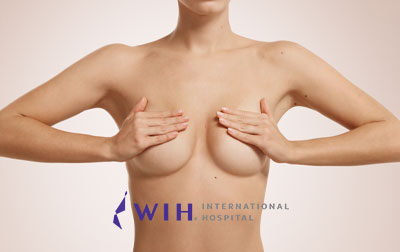
Breast Massage After Breast Augmentation
As you move into the recovery phase, one of the most crucial steps for achieving the best long-term results is breast massage. When performed correctly and at the right time, breast massage is a powerful tool to help your new breasts maintain a soft, natural feel while reducing the risk of complications. This comprehensive guide will walk you through the proper technique, explain the benefits, and provide essential tips for a safe and effective recovery routine.
⌵ What Is Breast Massage After Breast Augmentation?
Breast massage after surgery is a gentle, structured technique that supports the proper healing and positioning of your implants. By applying consistent, controlled pressure to the implants and surrounding tissue, you can help:
- Minimize scar tissue formation.
- Encourage natural implant placement.
- Maintain tissue elasticity and softness.
This routine is specifically designed to prevent a common complication known as capsular contracture, where the scar tissue around the implant hardens and tightens.
⌵ Your Step-by-Step Breast Massage Guide
💡 Important: Only begin these exercises once your surgeon has given you explicit approval. Starting too early can cause harm.
Step 1: Start with Clean Hands
Before you begin, wash your hands thoroughly with soap and water. This simple step is crucial to preventing any potential infection.
Step 2: Gentle Warm-Up
Find a comfortable position, either sitting or lying down. Gently support your breast with your hand. This helps to relax the muscle and tissue, preparing it for the massage.
Step 3: Upward Push
Place your palm flat under your breast. Slowly and gently push the implant upward towards your collarbone. Hold this position for 10–15 seconds, then release.
Step 4: Inward & Outward Push
First, place your hand on the outer side of your breast. Gently push the implant inward toward the center of your chest (your cleavage). Hold for 10–15 seconds. Next, place your hand on the inner side of your breast and push outward.
Step 5: Downward Push
Place your palm on the top of your breast. Gently and firmly press the implant downward. Hold for 10–15 seconds, then release.
Step 6: Repeat Regularly
Repeat this entire sequence for each breast. Aim to perform the massage 3–4 times per day, or as instructed by your surgeon. Each session should last approximately 5–10 minutes.
⌵ Why Breast Massage Is Crucial for Your Recovery
Prevents Capsular Contracture: This is the most significant benefit. Regular massage helps prevent the formation of a rigid scar capsule around the implant, keeping your breasts feeling soft and natural.
Maintains Natural Shape and Symmetry: Consistent massage encourages the implant to settle into its desired position, contributing to a more symmetrical and aesthetically pleasing result.
Enhances Long-Term Results: By supporting tissue flexibility and implant positioning, breast massage helps protect your investment and maintain the beautiful outcome of your surgery for years to come.
⌵ Important Tips for a Safe and Effective Massage
Listen to the Surgeon: Always follow the exact instructions provided by the surgeon. They know your specific case and can offer the best advice.
Discomfort is Normal, Pain is Not: It’s common to feel some mild discomfort or tightness during the massage, especially in the beginning. However, it should never be painful.
Stop Immediately if Something Feels Wrong: If you experience any sharp pain, unusual swelling, or other concerning changes, stop the massage and contact the surgeon right away to avoid complications.
Consistency is Key: Just like any exercise, consistency is what delivers results. Make breast massage a regular part of your daily routine.
FAQ
You should only begin after your surgeon has given you explicit approval, which is typically after your initial follow-up appointment, once a sufficient amount of healing has occurred.
Each session should last between 5 and 10 minutes, and you should repeat the routine 3 to 4 times a day.
It is highly recommended that you perform the massage yourself. This allows you to control the pressure and technique and be more attuned to how your body is responding.
Stop the massage immediately and contact your surgeon. Pain can be a sign of a potential issue, and it’s essential to seek professional guidance.

